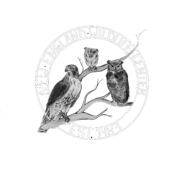
Managing the health and well-being of injured, orphaned or abandoned wildlife takes a lot of individuals working with different agencies throughout Massachusetts. The Cape Wildlife Center works with licensed wildlife rehabilitators in the community, other wildlife hospitals, and the Animal Control and Department of Natural Resources in each town. We all work very closely with the Massachusetts Department of Fish and Wildlife.
When we answer calls from the public with wildlife questions or emergencies, sometimes we will refer the caller to one of these other departments. Wildlife rehabilitators work out of their home, are volunteers and generally take in a specific group of wildlife that they will assess, rehabilitate and release whenever possible. They are listed by town and type of wildlife they care for. Anyone who cares for Migratory birds (all species in Massachusetts except for 8), needs an additional federal permit. There are not as many federally permitted rehabbers as there are those that can care for other species. At CWC we try to refer orphans to these rehabbers to leave room in our hospital for injured and sick animals.
We will take admissions from other hospitals if they need a specific skill we can provide, as we are the only Wildlife Hospital on Cape Cod that has a wildlife veterinarian.
When we receive calls where the caller needs help capturing or transporting an injured animal, or when the animal is a rabies species animal (fox, coyote, raccoon etc.), we will refer them to their local town Animal Control Officer or Department of Natural Resources. These agencies will assist in the safe and legal capture of an animal that will then be brought to our hospital for assessment and treatment. Sometimes, when I refer to an Animal Control Officer, the caller has a negative response and becomes concerned that the animal will immediately euthanized. I don’t know why this is the response, but I do want to share my experience with working with the Animal Control Officers on Cape Cod.
Every town has an ACO, and each department will function differently. Some are part of the police department, some carry firearms, some don’t. Some are more active in working with wildlife than others who focus more on domestic animals. Their mission statement generally is that they are to enforce legal ordinances and laws governing animals in their town. My experience has been that when any ACO is called to a scene, their first response is to assess the situation regarding the animal’s safety, the public’s safety and their own safety. They evaluate public safety issues not only in regard to physical injury, but also in regards to communicable diseases such as rabies and distemper.
I interviewed two ACO officers in two different departments. Both were active agencies that work with wildlife on a regular basis. If they need to capture an animal, they can only use towels, nets or catchpoles. Unless they have specific permission from Fish and Wildlife, no one can trap a wild animal. They then need to decide if the animal is too severely injured to survive, and may have to be humanely euthanized or if it can be transported to a wildlife hospital or rehabber for treatment. Many ACO are not required to treat wildlife as part of their job description, but they do it anyway to keep the public out of danger and to help animals not needlessly suffer.
Gary Buckminster, Wareham Dept of Natural Resources, responsible for the Animal Control Dept in that town said that they have taken a pro-active approach to form partnerships with Cape Wildlife Center, local Veterinarians and wildlife rehabbers so they have places to take injured wildlife. He concurs that animals are only euthanized to end severe suffering and it is a very low percentage. Typically, about 1-5 animals per month for hundreds of calls. The rest are brought for further treatment or released on site if uninjured. He describes his department as “caring people who exhaust all resources before having to end a life”. It is a last resort with a lot of focus on public health concerns. I asked him how the public can help an ACO. Because they gets hundreds of calls a month, he believes the best way to help them get to animals quicker is to leave only a brief message including the situation, location, and your contact info. They can get more details when they call you back. He also wants the public to not handle wildlife or put themselves in harms way. His department works tirelessly to coordinate and get the animals to a safe place even when it means going over the bridge on a Friday night in the summer.
Cape Wildlife Center has held 4 sessions of the course “Wildlife Triage for First Responders” . Seventy officers from these departments have attended. The topics covered include safe handling and transport, laws and regulations, public health best practices, field triage and identification, and symptoms of diseases. This is only one way we are reaching out to strengthen inter-agency bonds, get to know each other on a personal basis, and to know where we can support each other.
Working together helps all wildlife get the help they need faster and to get to the correct place. I hope this sheds some light on how ACO departments operate in today’s world. They are there to protect animals as much as they can, as we all are. The outcome may not be the one that is always wanted, but I can speak for all working with wildlife when I say it is always what is best for the animal, and in accordance with the law.

Recent Comments